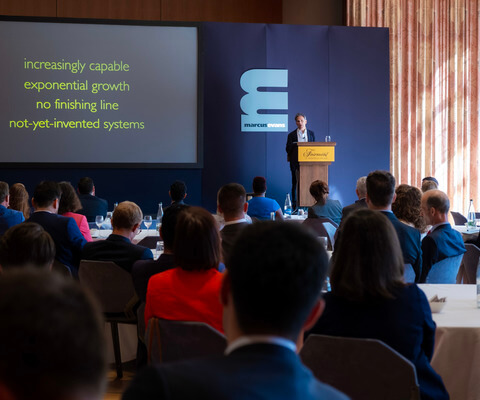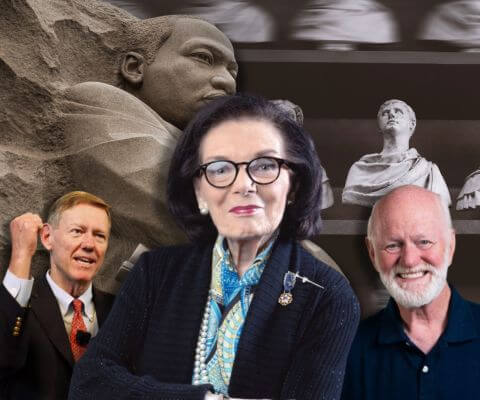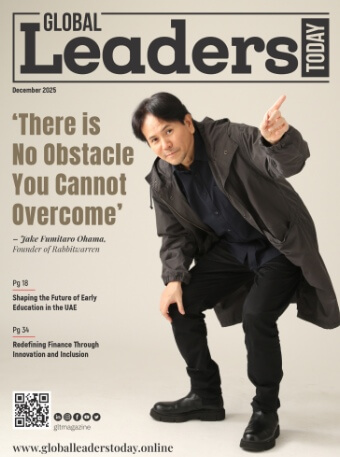- When Caring Becomes a Cage: How Over-Identification with Work Steals Your Self
- Redefining Finance Through Innovation and Inclusion
- ‘AI Prone To Errors, Use Alongside Other Tools’: Sundar Pichai
- ‘There is No Obstacle You Cannot Overcome’
- Pioneering Financial Innovation: Ali Alrawi and the Rise of Alfuras Group
Thought Leadership
Written by Contributing writers Vicky Smith and Lesly Cooper
You wouldn’t expect a house to stay dry with half its roof tiles missing, nor would you expect to build a two-story house with the number of bricks needed to build a bungalow. Companies rightly take a highly specific approach to the management of their supply chain, but oddly, the need for reliability and continuity that drives focus in this area doesn’t seem to apply to employee sustainability.
While there’s always vigorous agreement within senior leadership teams that employees are all individuals, at the same time, they often believe that employees will be able to cope with what’s asked of them, resulting in a kind of human resource homogenization. Employees are assumed to have equal coping capacity until proven otherwise. Then there’s also the troublesome assumption that they will let you know if they can’t cope – but the stress statistics tell us that they don’t.
This is the approach that’s often being taken, and it’s visible in the generalized nature of a lot of employee well-being and performance strategies and related provisions. There are many potentially helpful self-service interventions but a notable lack of specificity about who they will assist, under what circumstances those people will benefit, and, most critically, what issue they’re addressing. There’s no doubt that a broader range of pressure management skills mitigates poor well-being, so we applaud those companies that help their employees build personal resilience. But it isn’t enough on its own. It needs to be a strand in a broader strategy that also looks at what people need to build resilience for.
Trying to build resilience without more detailed awareness of what people are grappling with is a little like nailing jelly to a tree. Resilient behaviors can be described and taught, and it’s possible to discuss them generally and without specific context. However, knowledge of what the team is struggling with or what gets in the way of them being able to bring their full selves to work is going to make time spent adopting coping behavior feel much more relevant. It’s also much more likely to drive sustainable behavior change.
Helping your human resources build personal and team resilience makes sound business sense, and given that the behaviors involved pay equal dividends in responding to life events in general, it’s also a good thing for talent development and employee capability. But without data, knowing where to start can be problematic, particularly if you have no specific understanding of what they might need to become resilient to other than the ubiquitous heavy workload.
This difficulty is compounded by the fact that there’s no universally agreed definition of what resilience actually means. Psychologists define resilience as our process of adapting and remaining strong in the face of significant sources of stress or trauma. The Oxford English Dictionary defines it as ‘the capacity to recover quickly from difficulties, toughness’. In our work, we like to refer to it as the ability to be physically and mentally capable of handling what life throws at you and to retain your ability to choose your response under any circumstances. However it’s defined, there’s no downside to offering employees as much support as you can afford to help them adapt to change, stay mentally strong in the face of adversity, and retain the ability to choose the right way to react under pressure. There’s plenty going on in the world of work and beyond to make this money well spent.
But even when building resilience is part of a wider well-being strategy, it’s a mistake to think that this component is a purely personal journey and that the employee can become resilient on their own and without the cooperation or participation of the company that’s paying for it. Sadly, it does sometimes look as if that’s the expectation – the company puts them through a course, and hopefully, they’ll become less stressed about what they’re being asked to do. Building resilience in the workforce is a multi-level, poly-stakeholder activity. All parties have responsibilities and need to play their part.
An employee’s ability to take the learning they’re being offered and adopt it to change their outlook and behavior is heavily influenced by their working environment. For classroom theory to become a daily practice, the workplace culture needs to be an enabling one. Humans are a highly social species. As a result, individual decision-making is affected by unconscious assessment of what others are doing and the personal risk of doing something that’s different.
The context in which resilience training is offered is therefore crucial to its efficacy – it’s no good teaching employees about the power of strategic recovery and encouraging them to change their behavior accordingly if the manager’s behavior suggests he/she/they don’t believe this to be ‘real’ or a priority. It’s therefore obvious that for resilience training to be effective, the managers and leaders of the participants need to role model those same resilient behaviors themselves. By doing so, they give permission for team members to break some unhelpful habits and behave differently.
About the Authors
Vicky Smith is passionate about sharing her knowledge and has more than 20 years of consulting, coaching, facilitation, and training experience in locations across the globe. She holds an MSc in Organisation Development and Consultancy, an MSc in Psychology, and an MSc in Applied Health and Exercise. She is working on a Ph.D., researching psychological safety in organizations, and is also a qualified NLP trainer, psychotherapist, and executive coach.
Lesley Cooper is a management consultant with over 25 years of experience in the design and delivery of all elements of employee well-being management programs. In 1997 Lesley founded WorkingWell, an award-winning specialist consultancy that helps companies manage workplace pressure in a way that facilitates growth and development. WorkingWell was shortlisted for “Best Wellbeing Service Provider” at the Great British Workplace Wellbeing Awards 2021.
Vicky and Lesley are the co-authors of Brave New Leader: How to Transform Workplace Pressure into Sustainable Performance and Growth.
In a world plagued by growing intolerance and conflicts, it becomes imperative for us to examine the root causes of such issues and seek practical solutions. This article aims to shed light on the need...
Welcome to the European Corporate Counsel and IP Law Summits 2023, the pinnacle of European Legal events that bring together esteemed professionals from the corporate counsel and intellectual property law...
SIBCA is a prominent player in the Middle East’s building technologies industry, specialising in designing, implementing, and maintaining life safety and building technology systems. To overcome...
Written by contributing writer Gavin Brown, Director, Speak With Impact “Things are a lot different now. My confidence has taken a massive knock.” “I spent a long time working from home and only...
“Leadership flows from inner character and integrity of ambition, which inspires others to lend themselves to your organization’s mission.” aptly articulated by Frances Hesselbein....
Written by contributing writer, David García González, Founder, GoLocalise As is likely to be the case for many businesses, this continuing constant uncertainty means persuading our clients to...
Written by Contributing Writer, Will Polston. In Thailand, people have devised a simple way to control an elephant. When the elephant is a baby, they tie it to a mature tree using a thick rope. Being a...
Written by contributing writer, Tom Williams, Principal, Innovation Consult. If you want to move past the business stage gates and bust through your growth ceilings, it could be said that you have one...
In today’s fast-paced business world, it’s not enough for leaders to focus solely on achieving specific goals. They must also have a clear purpose that guides their decisions and actions....

















